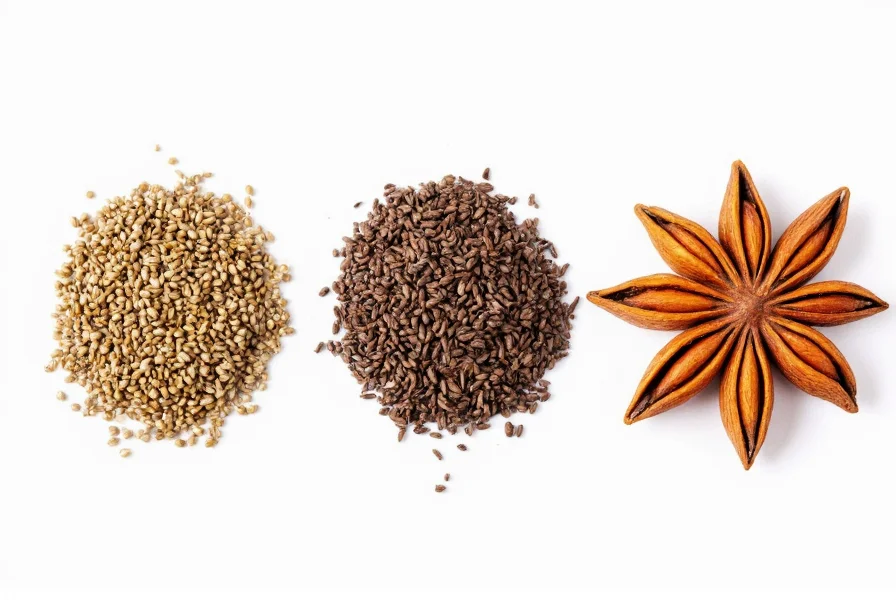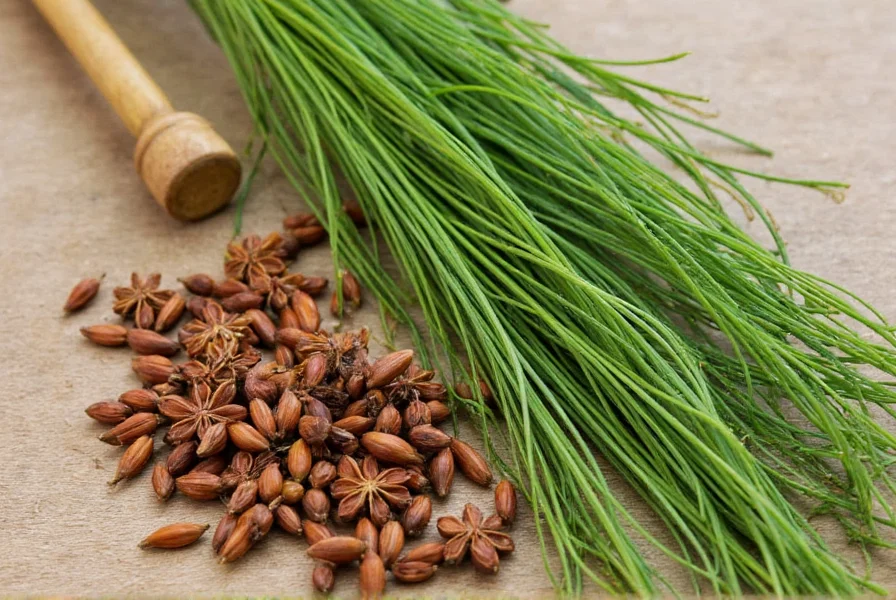When exploring the difference between anise and fennel seeds, many home cooks and herbal enthusiasts find themselves confused by these two aromatic plants. While both deliver that distinctive licorice-like flavor, understanding their botanical distinctions is crucial for proper culinary application and substitution. This comprehensive guide clarifies the anise vs fennel confusion with botanical accuracy and practical cooking insights.
Botanical Classification: Understanding the Scientific Differences
Anise (Pimpinella anisum) and fennel (Foeniculum vulgare) both belong to the Apiaceae family (formerly Umbelliferae), which explains some visual similarities. However, they are different genera and species with unique characteristics.
Anise is an annual herb native to the eastern Mediterranean and Southwest Asia. It grows to about 2 feet tall and produces small white flowers. The valuable part is its fruit, commonly called "anise seeds," which are actually the plant's fruit.
Fennel, by contrast, is a perennial plant that can reach heights of 3-5 feet. It has a bulbous base ( Florence fennel), feathery leaves, and yellow flowers. Both the seeds, leaves, and bulb are used in cooking, making fennel a more versatile plant in the kitchen.

Visual Identification: Telling Anise and Fennel Seeds Apart
One of the primary reasons for confusion between anise and fennel is their similar appearance. However, careful observation reveals key differences:
| Characteristic | Anise Seeds | Fennel Seeds |
|---|---|---|
| Size | Smaller (3-5mm) | Larger (4-10mm) |
| Shape | Oval with fine ridges | Straighter, more elongated |
| Color | Grayish-green to brown | Light green to yellowish-brown |
| Texture | Smoother | Slightly ridged |
| Plant Source | Annual herb | Perennial plant with bulb |
Flavor Profile Comparison: Anise vs Fennel in Cooking
While both deliver a licorice-like flavor, the difference between anise and fennel seeds becomes apparent when tasting them side by side:
Anise seeds have a more intense, sweet, and concentrated licorice flavor with warm notes. They're significantly stronger than fennel seeds, which is why recipes typically call for less anise when substituting.
Fennel seeds offer a milder, sweeter, and slightly more herbal flavor with citrus undertones. The fresh bulb has a crisp texture and subtle sweetness that makes it valuable beyond just its seeds.
Understanding these flavor differences is essential when considering whether you can substitute fennel for anise in recipes. While possible in some applications, the substitution ratio matters significantly.
Culinary Applications: When to Use Each
Both spices feature prominently in global cuisines, but their applications differ:
Anise seeds shine in:
- Baking (biscotti, gingerbread, fruit cakes)
- Mediterranean and Middle Eastern spice blends
- Liqueurs (ouzo, absinthe, anisette)
- Some sausage recipes
Fennel offers more versatility:
- Bulb: roasted, grilled, or raw in salads
- Fronds: as fresh herb garnish
- Seeds: in Italian sausage, breads, pickling, and Indian cuisine
When exploring anise seed and fennel seed comparison for cooking, remember that fennel's milder flavor makes it more versatile across savory dishes, while anise's intensity works best where a pronounced licorice note is desired.
Substitution Guidance: Can I Substitute Fennel for Anise?
The question of whether you can substitute fennel for anise is common among home cooks. The answer depends on the recipe:
When substituting anise for fennel, use about half the amount since anise is more potent. This works well in baked goods where the strong licorice flavor is welcome.
When substituting fennel for anise, you may need to increase the quantity by 50-100%, but be cautious as fennel's milder flavor might not deliver the intended intensity. This substitution works better in savory applications than sweet ones.
For the most authentic results in traditional recipes (like Italian sausage or Greek ouzo), using the specified ingredient yields the best flavor profile. Understanding what's the difference between anise and fennel helps prevent disappointing culinary results.
Common Confusions: Why People Mix Them Up
Several factors contribute to the persistent confusion about anise and fennel:
- Naming inconsistencies: In some regions, fennel seeds are called "sweet anise" or "aniseed fennel"
- Visual similarity: Both seeds are small, oval, and brownish
- Flavor overlap: Both contain anethole, the compound responsible for licorice flavor
- Marketing practices: Some spice companies use ambiguous labeling
Adding to the confusion, star anise (Illicium verum) is a completely different plant (native to China) that also contains anethole and delivers a similar flavor profile. This trio of "anise"-named plants creates significant misunderstanding among cooks.

Medicinal Properties and Safety Considerations
Both plants have traditional medicinal uses, but their biochemical profiles differ:
Anise contains higher concentrations of anethole (80-90%) compared to fennel (50-60%), which explains its stronger flavor and more potent medicinal properties. Traditional uses include:
- Anise: digestive aid, cough suppressant, galactagogue (promotes lactation)
- Fennel: digestive support, menstrual cramp relief, eye health
While generally safe in culinary amounts, both should be used cautiously in medicinal quantities, especially during pregnancy. Those with allergies to plants in the Apiaceae family (carrots, celery, parsley) should exercise caution with both anise and fennel.
Conclusion: Appreciating the Distinctions
Understanding the anise and fennel botanical classification reveals they're distinct plants with unique characteristics despite their similarities. Recognizing these differences enhances your culinary precision and helps you make informed substitutions when necessary.
Whether you're following a traditional recipe or experimenting with new flavors, knowing what's the difference between anise and fennel ensures your dishes achieve the intended flavor profile. Keep this guide handy next time you're at the spice aisle or planning a recipe that calls for one of these licorice-flavored ingredients.











 浙公网安备
33010002000092号
浙公网安备
33010002000092号 浙B2-20120091-4
浙B2-20120091-4